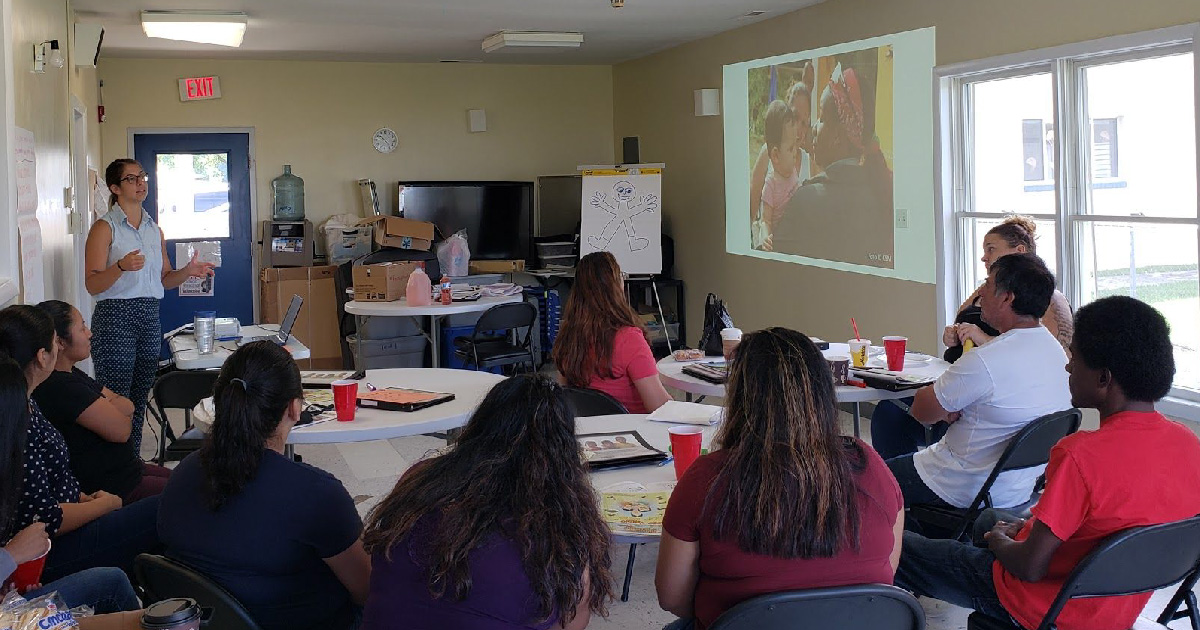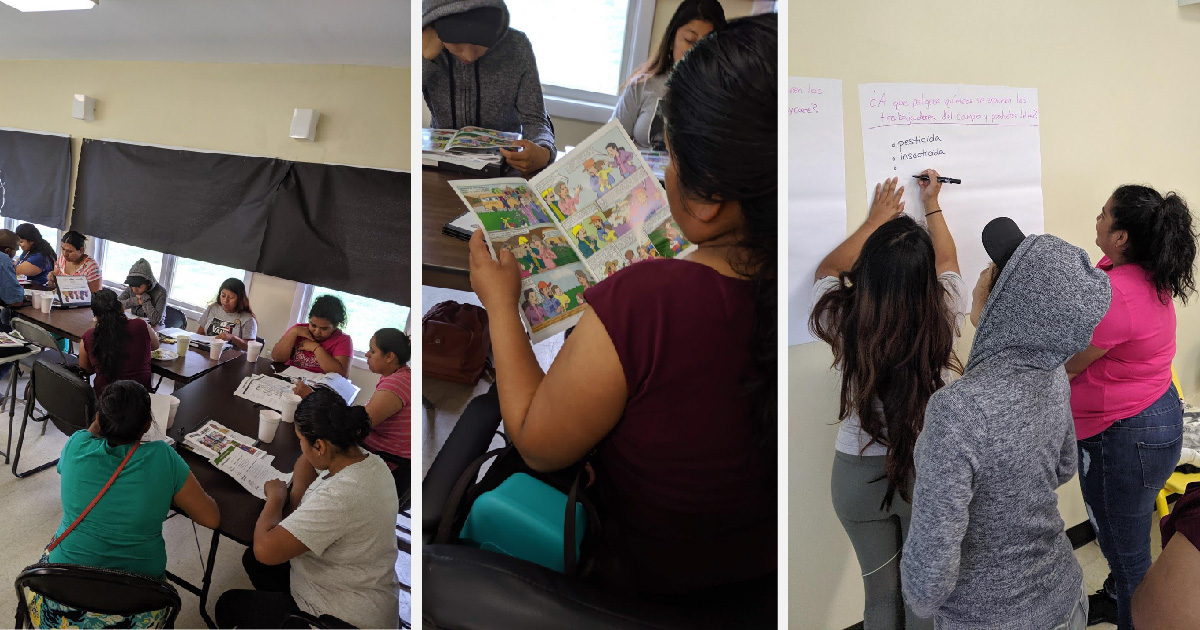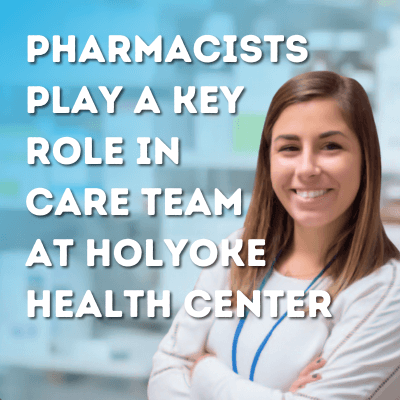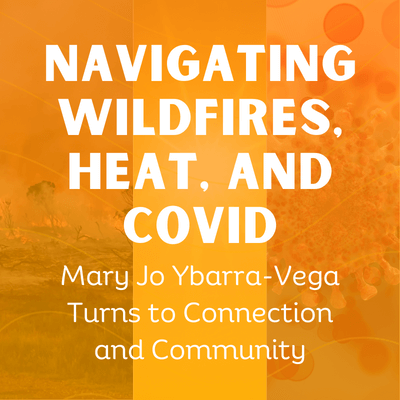In the Field: Training CHW Parents to Protect Kids from Environmental Exposures

[MCN's Kate Kruse trains CHW parents on environmental exposure.]
When Gloria came to work in the United States, lead poisoning was a hazard she had never even heard of, much less encountered in her day-to-day life. Known as the “invisible villain,” lead is a hard metal that can cause stunted development, learning disabilities, and seizures in children who are exposed to high levels of the substance. Lead hides in certain ceramic pottery, pipe systems, and paints that were used to furnish old houses, some of which are now occupied by migrant farmworkers who move in and out of countless homes over the course of the summer picking season. Previously unaware of lead and its dangers, Gloria was horrified to find that upon taking her child to the clinic for a checkup, a test showed extremely high levels of the metal in her 15-month-old daughter’s blood. After moving into a new house and seeking medical treatment for her daughter, Gloria is hopeful that the effects of lead on her child’s development will be minimal, but it is too soon to tell for sure. Like so many other migrant parents, Gloria was unaware of the dangers of lead poisoning, and therefore unable to prevent her child’s exposure to the hazardous contaminant. Through Migrant Clinicians Network’s project, “It Takes Community: Protecting Farmworker Children from Environmental Contaminants,” Gloria has been trained as a community health worker (CHW) and shares her story with other parents in her community so that their children can avoid exposure to toxic substances like lead.
This project, which is supported by the Aetna Foundation’s Cultivating Healthy Communities Grant Program, gave me the opportunity to travel to the Eastern Shore of Virginia to work with East Coast Migrant Head Start Project (ECMHSP) to facilitate our second year of health and safety “train the trainer” workshops for parents to serve as CHWs. During these workshops, I partnered with ECMHSP staff to train farmworker parents to educate other farmworker parents in their community about how to keep their children safe from environmental contaminants such as pesticides, household chemicals, asthma triggers, and lead. While the majority of the parents trained as CHWs are longtime residents of the Eastern Shore of Virginia, this community-oriented majority-Latinx population was motivated to share their knowledge with the migrant workers in the surrounding area. Over the course of the summer, MCN and ECMHSP facilitated three training sessions across towns on the Eastern Shore of Virginia: in Exmore, Parksley, and Cheriton. After an incredibly successful first year, I was very optimistic and enthusiastic to begin another season working with our partners.
The first of our three workshops was held in downtown Exmore, VA, a small agricultural town whose main attraction is the kind and hospitable nature of the people who live there. While cornfields and a handful of fast food chain restaurants are the largest establishments in town, Exmore was chosen for our workshop because it is central to each of ECMHSP’s centers in Parksley and Cheriton. While there were only a few parents in attendance, this small but spirited group made for a great first workshop for the summer. With help from Jose Enriquez, a staff member at Parksley’s ECMHSP center, we hosted a lively and interactive training session that walked participants through the ins and outs of environmental exposures while providing them with the tools to later relay the same information to other parents in their community.
Taking advantage of the more intimate nature of this training, Enriquez and I were able to connect on a more personal level with the parents who attended this workshop. They shared with us some challenges that prevented some of the parents from attending, including transportation and childcare.

[CHW parents participating in the different activities in the training.]
Hoping to address some of the barriers encountered in our first training, our remaining two workshops for the summer were held at the ECMHSP centers in Parksley and Cheriton, where parents felt safe and childcare was provided. And it worked! Our second workshop, held at the Parksley center, had three times the amount of participants, all of whom were deeply enthusiastic about our project and the information we shared with them. Once again assisted by Enriquez, we hosted an exceptional training session about protecting children from environmental contaminants. Though the training took place during the week after working hours, the parents’ energy and joy kept our spirits high and we had a wonderful workshop. In fact, one of the parents who attended our first workshop was so impressed by our information and resources that she returned to Parksley’s workshop to participate a second time. She shared her appreciation for our work: “In all my years of attending trainings like this, I have never had such great resources. You all are doing great things.” This energizing workshop and the incredible praise it received served as a reminder of the great impact these projects can have on a community.

Our third and final training, conducted in ECMHSP’s Cheriton center with the help of staff member Carina Ramirez, was a great success as well. While the participants’ children played outside under the watchful eye of Head Start staff, parents and workshop facilitators alike munched on donuts and settled in to talk about environmental health and safety. The workshop’s location was accessible and familiar to parents, so we had another impressive turnout. As an unexpected surprise, two of the parents in attendance were native English speakers with no experience speaking Spanish, which is the primary language of these trainings. Acting on our feet, Ramirez and I accommodated our attendees by going back and forth between English and Spanish, making for a particularly unique and dynamic workshop for all.
Armed with education and ready to serve as CHWs, these parents will take the information and skills they gained and share it with their neighbors to help protect children in their community from environmental hazards. The parents with whom I had the privilege of connecting demonstrated an incredible passion for their own children’s health and safety as well as the wellbeing of those around them. I have no doubt that these parents will make a meaningful impact on the lives of families in their community.
Here are some resources that can help:
Pesticides Nearby… But Staying Healthy
A Little Bit of Poison… Will it Kill You?
Brochures on Asthma, Lead and Household Chemicals
Like what you see? Amplify our collective voice with a contribution.
Got some good news to share? Contact us on our social media pages above.
Return to the main blog page or sign up for blog updates here.
- Log in to post comments






